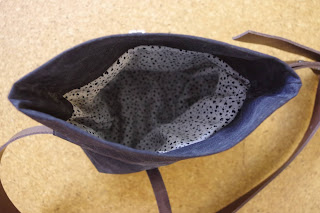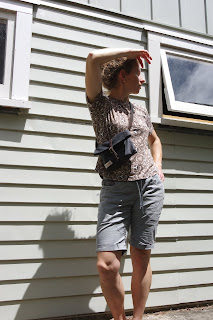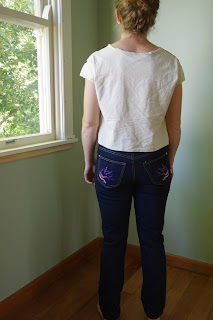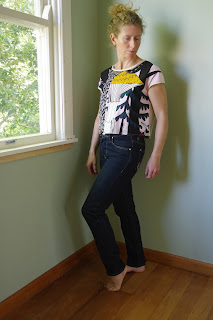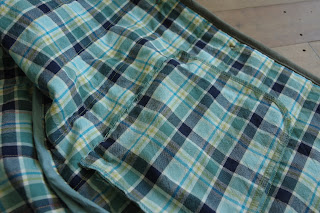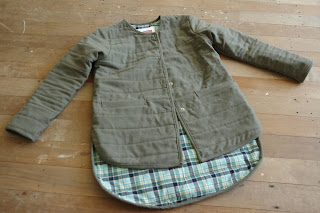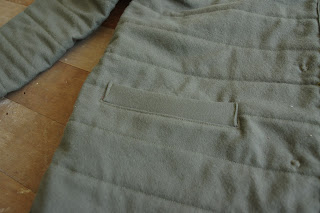I'm been getting better. The backlog of cut out projects from ages ago is down to 6. The number of projects that have been sitting on my long-haul to do list is only 2. And I bought this fabric specifically to make these jeans a mere...3 months ago!! I really see the correlation between spontaneity and satisfaction in sewing. Yes, some projects need to be chewed on to develop in the head, but it's best to do that before you buy the fabric. I haven't quite learnt the lesson yet but I'm getting there.
So, out of the blue this winter I wanted Morgan jeans. I had made my Gingers in the nick of time, ie, I no longer want super tight jeans and was kind of over them but forged ahead anyway. I was actually in The Fabric Box in Auckland (oh, when we could go to Auckland...) and realised I really wanted to make some looser fit selvedge denim jeans.
I researched around a bit and it seemed best to cut to my measurements. Size 6. I made a 4 in the Gingers and even that has extra material in it - I could possibly have fit into a 2. For the Morgans 6 was a good choice.
I did not really do any research on how to take advantage of selvedge denim. I don't really see any benefits. I found that trying to use the selvedge made it harder to cut the jeans and finish them. Presumably there are tutorials that make this more sensible.
The only modification I did for that was to kind of flatten out the hip a little bit so I could cut the outseams of both front and back on the selvedge. I took away a cm on each side at the greatest, tapering down to normal up and down from that - so you could argue these are less than a size 6. Obviously you can only do that up to a certain size before the curve is more important to fit your hips.
I found the instructions to be ok. Unlike the Gingers I didn't need to review the sewalong to understand them (the Ginger fly written instructions make no sense to me). I didn't really understand why I was sewing things where I was, but I trusted and the fly came out fine. As always, this is because I have already made Megan Nielsen Dawn Jeans and I have learnt from those instructions (they are MUCH BETTER.) One beef is that these instructions don't teach you how to manage topstitching thread. I actually used real topstitching thread here, which means you can't backstitch the ends, you need to pull them through to the back side and knot them off.
Once I made the jeans, I was sort of surprised by their non-loose, non-boyfriendy fit.
Oh but are we talking about my birds? I wrote to the source (the Badaboom print shop) and asked if they were iron on, and received a firm yes. So I ironed them on...and they proceeded to fall off right after I sewed the pockets in place, thus ensuring many hours of torture hand sewing these patches onto pockets that were already on the jeans. Learn from this mistake! Never trust the iron! I would probably have had to hand sew them no matter what because of the irregular shape, but with the pockets sewn in place it was hard work.
More birds! Also there was zero hesitation to create a design feature here when my inside waistband failed to cover the entire seam allowance mess...I just stitched everything down as securely as possible and I rather like the triangle on the outside.
After sewing on the patches I wore these a few days in a row and noticed that the denim settled a lot, and by the end of two days, I would indeed call them boyfriend fit. That's in dramatic comparison to the Dawn jeans. Straight off the sewing machine, the Dawn jeans and Morgans are very similar.
I found:
-Dawns have a narrower upper thigh and a higher rise, and a really stupid pocket entrance which I never really managed to fix
-The fit of Morgans was better on me
After wear, the Dawns never settled and are still tight, but the Morgans loosened up a lot. Presumably that's more to do with the denim. All of my Dawns are still really tight, but the green ones with the modifications fit me amazingly well.
My photos are taken after their first wash - tight again! I'm happy with the fit of these, but now I think I've gone full circle. I modified the Dawn jeans with so much attention that when I next make jeans I think I would use stretch denim and my modified Dawn pattern (I have discussed these changes before but basically I used the crotch of the Persephone pants superimposed onto the Dawns, giving me a better butt shape and more space in the upper thighs.) Also a side note, there are patch pocket pattern pieces available for the Persephones now! The in seam pockets are pretty cool but it's hard to get anything into them.


